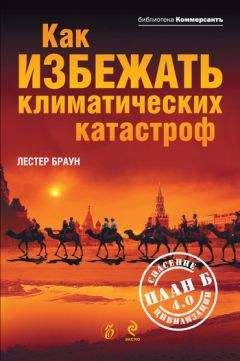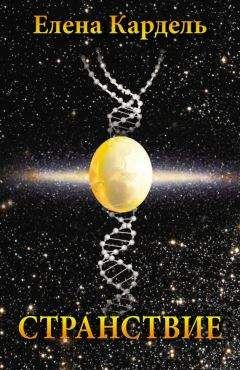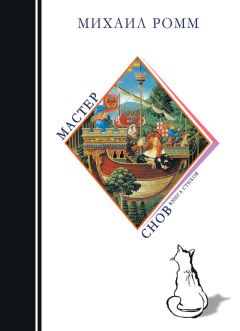Лестер Браун - Как избежать климатических катастроф?: План Б 4.0: спасение цивилизации
74
Lester R. Brown. The Twenty-Ninth Day (New York: W. W. Norton & Company, 1978).
75
Сведения о площади зернового клина в США взяты из электронной базы данных министерства сельского хозяйства США Production, Supply and Distribution — см.: www.fas.usda.gov/psdonline (данные обновлены 9 апреля 2009 г.). Цифры, характеризующие разрушение почвенного слоя, рассчитаны автором на основе данных, приведенных в статье: Mohan K. Wali et al. “Assessing Terrestrial Ecosystem Sustainability”, Nature & Resources, October-December 1999, pp. 21–33, и в публикации: World Resources Institute (WRI), World Resources 2000–2001 (Washington, DC: 2000).
76
Электронная база данных Продовольственной и сельскохозяйственной организации ООН (FAO) ResourceSTAT — cм.: faostat.fao.org (данные обновлены в апреле 2009 г.); Lester R. Brown, “Melting Mountain Glaciers Will Shrink Grain Harvests in China and India”, Plan B Update (Washington, DC: Earth Policy Institute, 20 March 2008).
77
Jacob W. Kijne, Unlocking the Water Potential of Agriculture (Rome: FAO, 2003), p. 26.
78
Lester R. Brown. Outgrowing the Earth (New York: W. W. Norton & Company, 2004), pp. 101–102.
79
Walter C. Lowdermilk, Conquest of the Land Through 7,000 Years. USDA Bulletin No. 99 (Washington, DC: USDA, Natural Resources Conservation Service, 1939).
80
Там же p. 10.
81
FAO, “FAO/WFP Crop and Food Assessment Mission to Lesotho Special Report”, — www.fao.org, просмотрено автором 29 мая 2002 г.; U. N. Population Division, World Population Prospects: The 2008 Revision Population Database — eas.un.org/unpp, обновлено 11 марта 2009 г.; Michael Grunwald, «Bizarre Weather Ravages Africans’ Crops”, Washington Post, 7 January 2003.
82
USDA, op. cit. note 2; U. N. World Food Programme (WFP), “Lesotho” — см.: www.wfp.org/countries/lesotho; просмотрено автором 5 мая 2009 г.
83
USDA, op. cit. note 2; FAO Global Forest Resources Assessment 2005 (Rome: 2006), p. 193; WFP, “Haiti” — см.: www.wfp.org/countries/ haiti; просмотрено автором 5 мая 2009 г.
84
U. N. Environmental Programme (UNEP), Mongolia: State of the Environment 2002 (Pathumthani, Thailand: Regional Resource Centre for Asia and the Pacific, 2001), pp. 3–7; U. N. Population Division, op. cit note 8; USDA, op. cit. note 2.
85
FAO, “More People Than Ever are Victims of Hunger”, background note (Rome: June 2009).
86
National Aeronautics and Space Administration Earth Observatory, “Dust Storm off Western Sahara Coast” — см.: earthobservatory.nasa.gov; просмотрено автором 9 января 2005 г.
87
Paul Brown, “4x4 Replace the Desert Camel and Whip Up a Worldwide Dust Storm”, Guardian (London), 20 August 2004.
88
Там же.
89
Ann Schrader, “Latest Import from China: Haze”, Denver Post, 18 April 2001; Brown, op. cit. note 14.
90
Howard W. French, “China’s Growing Deserts Are Suffocating Korea”, New York Times, 14 April 2002.
91
Количество пыльных бурь в Китае см. в Таблице 1–1 книги: Lester R. Brown, Janet Larsen, and Bernie Fischlowitz Roberts, The Earth Policy Reader (New York: W. W. Norton&Company, 2002, p.13).
92
U. S. Embassy, “Desert Mergers and Acquisitions”, Beijing Environment, Science, and Technology Update (Beijing: 19 July 2002), p. 2.
93
Asif Farrukh, Pakistan Grain and Feed Annual Report 2002 (Islamabad, Pakistan: USDA Foreign Agricultiral Service, 2003).
94
UNEP, Africa Environment Outlook: Past, Present, and Future Perspectives (Nairobi: 2002).
95
Оценка площади территории взята из книги: Stanley Wood, Kate Sebastian, and Sara J. Scherr, Pilot Analysis of Global Ecosystems: Agroecosystems (Washington, DC: International Food Policy Research Institute and WRI, 2000), p. 3; FAO, ProdSTAT — электронная база данных: faostat.fao.org, обновлено в июне 2009 г.
96
Численность пастухов взята из публикации: FAO, The State of Food Insecurity in the World 2003 (Rome: 2003), p. 15; Robin P. White, Siobhan Murray, and Mark Rohweder, Pilot Analysis of Global Ecosystems: Grassland Ecosystems (Washington, DC: WRI, 2000); U. N. Population Division, op. cit. note 8; FAO, op. cit. note 22; Southern African Development Coordination Conference, SADCC Agriculture: Toward 2000 (Rome: FAO, 1984).
97
Government of Nigeria, Combating Desertification and Mitigating the Effects of Drough in Nigeria, Revised National Report on the Implementation of the United Nations Convention to Combat Desertification (Nigeria: April 2002); U. N. Population Division, op. cit. note 8; FAO, op. cit. note 22.
98
U. N. Population Division, op. cit. note 8; FAO, op. cit. note 22; Iranian News Agency, “Official Warns of Impending Desertification Catastrophe in Southeast Iran”, BBC International Reports, 29 September 2002.
99
UNEP, Afganistan: Post-Conflict Environmental Assessment (Geneva: 2003), p. 52.
100
FAO, op. cit. note 22.
101
Wang Tao et al., «A Study on Spatial-temporal Changes of Sandy Desertified Land During Last 5 Decades in North China”, Acta Geographica Sinica, vol. 59 (2004), pp. 203–212.
102
Wang Tao, Cold and Arid Regions Environmental and Engineering Research Institute (CAREERI), Chinese Academy of Sciences, сообщение автору книги, посланное по электронной почте 4 апреля 2004 г.; Wang Tao, «The Process and Its Control of Sandy Desertification in Northern China”, CAREERI, Chinese Academy of Sciences, seminar on desertification, Lanzhou, China, May 2002.
103
FAO, The State of Food and Agriculture 1995 (Rome: 1995), p. 175; Rosamond Naylor et al., “Losing the Links between Livestock and Land”, Science, vol. 310 (9 December 2005), pp. 1, 621–622.
104
“The Great North American Dust Bowl: A Cautionary Tale” в сборнике: Secretariat of the U. N. Convention to Combat Desertification, Global Alarm: Dust and Sandstorms from the World’s Drylands (Bangkok: 2002), pp. 77–121; John Steinbeck, The Grapes of Wrath (New York: Viking Penguin, Inc. 1939).
105
FAO, op. cit. note 30, p. 175; David Christian, Imperial and Soviet Russia: Power, Privilege, and the Challenge of Modernity (New York: Palgrave Macmillan, 1997), p. 366; USDA, op. cit. note 2; France from USDA, Foreign Agricultural Service, World Agricultural Production (Washington, DC: April 2009), p. 7.
106
David Kaimowitz et al., Hamburger Connection Fuels Amazon Destruction (Jakarta, Indonesia: Center for International Forestry Research, 2004); Carlos R. Spehar, “Production Systems in the Savannahs of Brazil: Key Factors to Sustainability — в сборнике: Rattan Lal, ed., Soil Quality and Agricultural Sustainability (Chelsea, MI: Ann Arbor Press, 1998) pp. 301–318; Daniel Nepstad, “Climate Change and the Forest”, Tomorrow’s Amazonia: Using and Abusing the World’s Last Great Forests (Washington, DC: The American Prospect, September 2007); Geoffrey Lean, “A Disaster to Take Everyone’s Breath Away”, Independent (London), 24 July 2006.
107
Craig S. Smith, “Saudis Worry as They Waste Their Scarce Water”, New York Times, 26 January 2003.
108
Andrew England, “Saudis to Phase Out Wheat Production”, Financial Times, 10 April 2001; USDA Population Division, op. cit. note 8.
109
Michael Ma, “Northern Cities Sinking as Water Table Falls”, South China Morning Post, 11 August 2001; Smith, op. cit note 34; John Opie, Ogallala: Water for a Dry Land, 2nd ed. (Lincoln, NB: University of Nebraska Press, 2000), p. 3.
110
U. N. Population Division, op. cit. note 8; USDA, op. cit. note 2; Christopher Ward, “Yemen’s Water Crisis” — статья основана на лекции, прочитанной в Британском Йеменском обществе в сентябре 2000 г., July 2001; Fund for Peace and Foreign Policy, “The Failed States Index”, Foreign Policy, July/August 2009, pp. 80–93.
111
Ma, op. cit note 36; доля урожая зерновых, полученных с СевероКитайской равнины, взята из статьи: Hong Yang and Alexander Zehnder, “China’s Regional Water Scarcity and Implications for Grain Supply and Trade”, Environment and Planning A, vol. 33 (2001) и из электронной баз данных Национального статистического бюро Китая — см.: www.stats.gov.cn/tjsj/ndsj2008/indexeh.htm; просмотрено автором 9 июня 2009 г.
112
Ma, op. cit. note 36.
113
World Bank, China: Agenda for Water Sector Strategy for North China (Washington, DC: April 2001), pp. vii, xi; U. N. Population Division, op. cit note 8; USDA, op. cit note 2.
114
Число фермеров и объемы инвестиций в бурение и оснащение скважин взяты из работы: Peter H. Gltick et al. The World’s Water 2006–2007 (Washington, DC: Island Press, 2006), p. 148; количество скважин и темпы истощения запасов подземных вод взяты из статьи: Fred Pearce, “Asian Farmers Sucking the Continent Dry”, New Scienist, 28 August 2004.
115
Pearce, op. cit. note 41.
116
USDA, op. cit note 2; John Briscoe, India’s Water Economy: Bracing for a Turbulent Future (New Delhi: World Bank, 2005); U. N. Population Division, op. cit. note 8.
117
USDA, Agricultural Resources and Environmental Indicators 2000 (Washington, DC: February 2000), chapter 2.1, p. 16; доля орошаемых земель подсчитана на основании данных, приведенных в публикации: FAO, op. cit. note 2; урожаи расчитаны на основании данных, приведенных в публикации USDA, op. cit. note 2; Sandra Postel, Pillar of Sand (New York: W. W. Norton & Company, 1999), p. 77.
118
U. N. Population Division, op. cit note 8; снижение уровней водных поверхностей взято из таблицы, приведенной в работе: “Pakistan: Focus on Water Crisis”, U. N. Integrated Regional Information Networks News, 17 May 2002.
119
“Pakistan: Focus on Water Crisis”, op. cit note 45; Sardar Riaz A. Khan, “Declining Land Resources Base”, Dawn (Pakistan), 27 September 2004.
120
Chenaran Agricultural Center, Ministry of Agriculture, послание, переданное по электронной почте автору Хамидом Таравати, издателем из Ирана 25 июня 2002 г.; USDA, op. cit. note 2.
121
Deborah Camiel, “Israel, Palestinian Water Resources Down the Drain”, Reuters, 12 July 2000; USDA, op. cit. note 2; “Palestinian Water Crisis Deepens”, BBC News, 20 April 2009.



